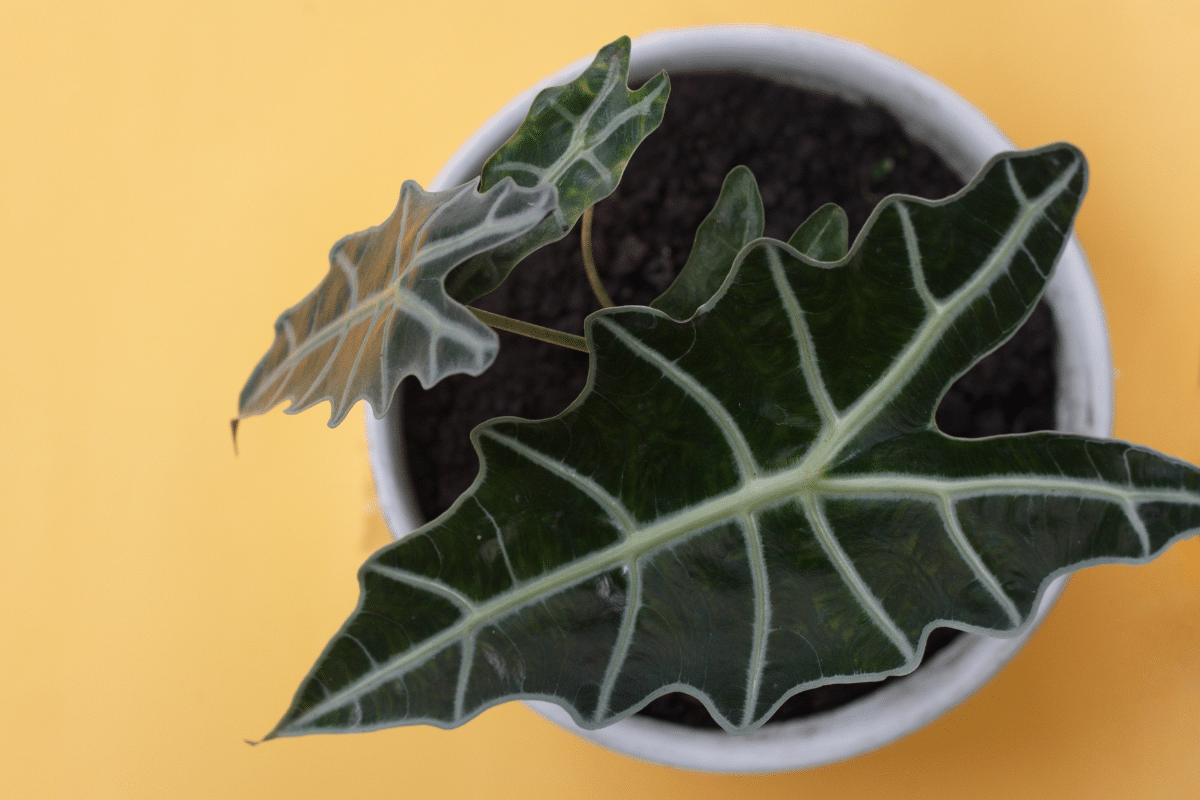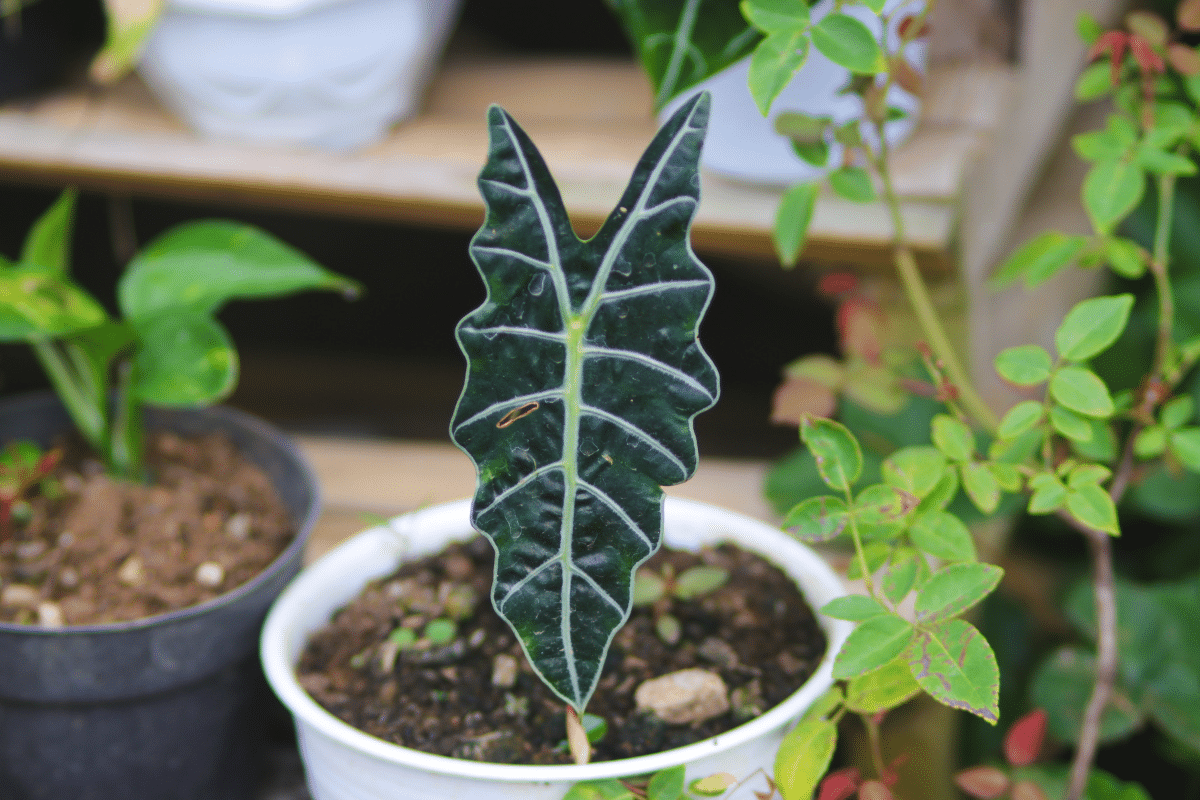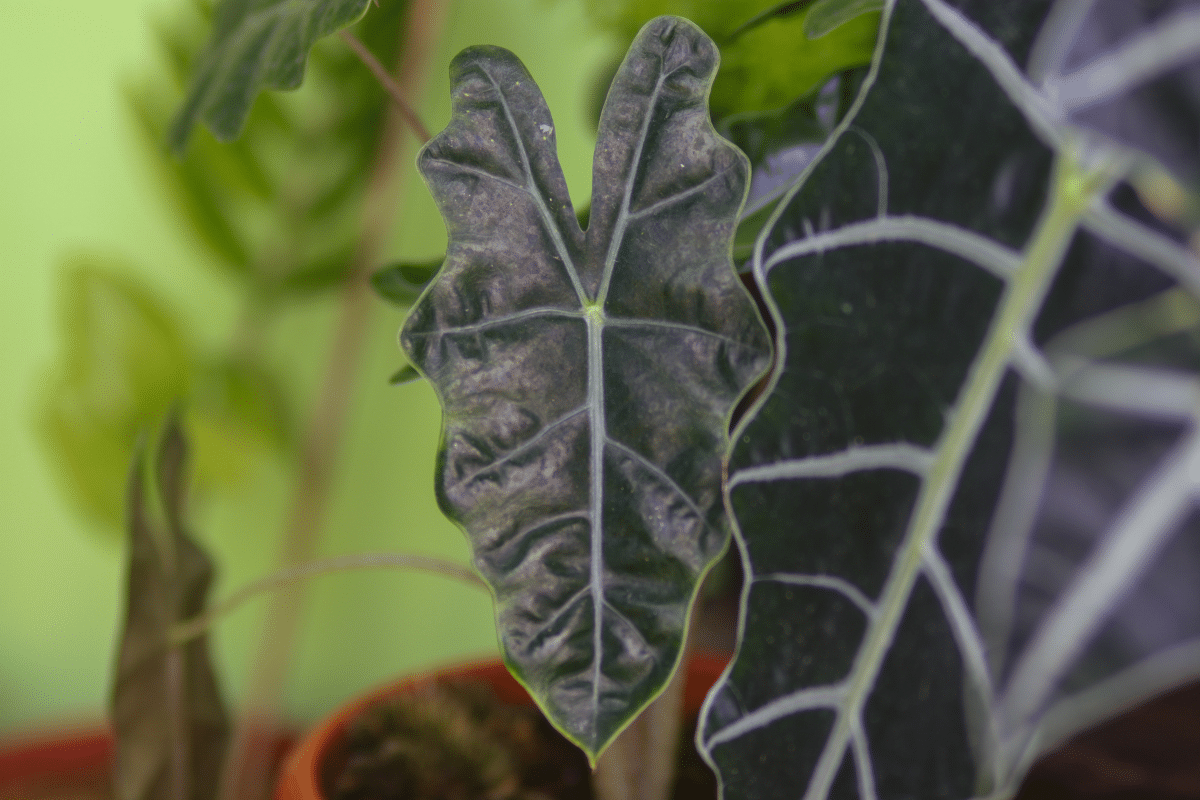Looking to add stunning tropical plants to your home? Why not consider the Alocasia Polly? Its striking leaves easily add beauty to any living space, impressing plant lovers and non-plant lovers alike. It’s a versatile plant that you can use as home decor in different ways.
While helping it grow can be challenging, this plant will thrive with just the right know-how. Curious about this stunning tropical Alocasia Polly? Learn more about this incredible and unique tropical plant below.[feast_advanced_jump_to]
Adding plants to your living space is an excellent way to liven up the area and make it feel more vibrant and lively. One unique and creative way to add some greenery is by hanging an Alocasia Polly plant in your home or office. In this article we’ll look at some tips for hanging and caring for this beautiful plant.
The Alocasia Polly, also known as the African Mask Plant, is a popular houseplant known for its large, glossy leaves. It’s a hybrid variety of Alocasia that was created by crossing the Alocasia longiloba and Alocasia sanderiana.
Some key features of the Alocasia Polly:
-
Large, arrowhead-shaped leaves that can grow up to 1 foot long. The leaves have a striking, velvety texture.
-
Leaves are typically a dark green color with prominent white or light green veins, Some varieties may have hints of purple,
-
Under the right care, the Alocasia Polly can grow up to 3-4 feet tall and 2-3 feet wide. However, size can be controlled by the pot size when grown indoors.
-
Native to the tropical rainforests of Asia and Australia. Thrives in warm, humid environments.
How to Hang an Alocasia Polly
Hanging an Alocasia Polly helps save floor space while adding lots of visual interest to a room. Follow these tips for a successful hanging plant display:
Choose an Appropriate Hanging Pot
-
Opt for a lightweight hanging pot with drainage holes at the bottom to prevent waterlogging. A plastic or ceramic pot works well.
-
Make sure the pot is large enough to accommodate the Alocasia Polly’s root system – generally 10-12 inches wide is a good size.
-
Consider a self-watering hanging pot to help maintain even moisture.
Select a Sturdy Hanging System
-
Install heavy duty hooks, chains, or brackets to hang the plant. The system must support the weight when the pot is wet.
-
For ceiling hooks, anchor to a stud or solid beam to hold the weight safely.
-
Opt for adjustable chains so you can modify the height as needed.
Position in an Appropriate Spot
-
Place the hanging Alocasia Polly in bright, indirect light. Some morning sun is fine.
-
Keep away from heating and cooling vents which may dry out the plant.
-
Ensure the leaves have sufficient space without brushing walls or ceilings.
Caring for a Hanging Alocasia Polly
Caring for a hanging Alocasia Polly is similar to caring for this plant in other situations. Just be sure to take its hanging position into account. Here are some tips:
-
Water: Water thoroughly whenever the top inch of soil becomes dry. Water less frequently in winter.
-
Light: Bright, indirect light is essential. Rotate the plant or supplement with grow lights if needed.
-
Humidity: Mist leaves, use a pebble tray, or run a humidifier to maintain 40-50% humidity.
-
Temperature: Ideal temperatures are 60-80°F. Keep away from cold drafts.
-
Fertilizer: Use a balanced liquid fertilizer at half strength every 2-4 weeks in the growing season.
-
Pruning: Remove any dead, damaged, or unsightly leaves to keep the plant looking its best.
-
Dusting: Gently wipe the leaves every so often to remove dust and improve light absorption.
-
Repotting: Repot every 2-3 years in spring to refresh the soil and provide more room for root growth.
Ideas for Displaying the Hanging Alocasia
Get creative with how you display your hanging Alocasia Polly plant. Here are some ideas to try:
-
Hang it in front of a bright window where it can bask in indirect sunlight.
-
Suspend it above a desk, sofa, or dining table as a living accent piece.
-
Let it be the focal point in an entryway or above an empty wall space.
-
Group it with other hanging plants for a jungle effect. Combining different leaf shapes and textures looks spectacular.
-
Place it in a corner to add visual interest and draw the eye upwards.
-
Hang multiple Alocasia Polly plants in coordinating pots at different heights for drama.
Benefits of Hanging Alocasia Polly Plants
Beyond creating a spectacular display, hanging Alocasia Polly plants offer many benefits:
- Saves floor and tabletop space, allowing you to have larger plants.
-Elevates plants to eye-level so you can appreciate their beauty up close.
-Adds height, dimension, and intrigue to indoor spaces.
-Improves air circulation around the leaves.
-Allows you to enjoy the plant from all angles as it gently turns and sways.
-Provides a tropical, jungle vibe reminiscent of its rainforest origins.
So if you’re looking to increase the greenery in your home or office, hanging an Alocasia Polly plant is a creative and visually striking choice. Follow the care tips outlined here and get creative with how you display it. Soon you’ll have a gorgeous new living accent that fills the space with vibrant plant energy.

What is Alocasia Polly?
Alocasia Polly is an elegant tropical plant that many plant enthusiasts worldwide clamor to get. Some people also call it Alocasia amazonica or African mask plant. Most people use it as an ornamental plant, thanks to its bold-looking foliage.
Like most varieties in the Alocasia family, this stunner is natively found in the tropical rainforests of South Asia, Southeast Asia, and South China. You can also find it in the South Pacific Islands.

Because of its bold features, it’s a snap to recognize the Alocasia Polly from other plants. It has bold, dark green leaves that have white veins. Its large leaves are usually green and arrow-shaped, with a glossy finish. Describing it as dramatic is an understatement!
Many plant lovers and homemakers (myself included) see it as a prime choice for a decorative indoor houseplant. It can brighten up a room and create a more pleasant dwelling space. It would look great next to a Croton Petra or any of these beautiful purple house plants.
Alocasia Polly Problems: Common Pests and Diseases

The Alocasia amazonica is not completely immune to pests and diseases. You might see little critters here and there from time to time. But, do not panic if you see pests in your Alocasia Polly! You can keep your Alocasia Polly healthy with a clear head and the right information to prevent these issues.
Spider mites are notorious for damaging the Alocasia amazonica Polly plant. It’s a small parasite that likes to drink sap from your plant’s leaves, turning the leaves yellow. So if you find yellow leaves on your Alocasia plant, it’s one sign that spider mites might live in your indoor plants. Another easy tell is finding webby structures under the leaves.
Wondering how you can prevent this? You just need to keep it well-hydrated and mist it regularly.
If you’re caring for an Alocasia Polly, mealybugs are a nasty sight to see. These small, annoying insects also feed on the sap from the leaves. But apart from turning the leaves yellow, they can also damage your plant enough to stunt them.
Mealybug infestations spread fast, and you’ll be in bigger trouble if you don’t get rid of them ASAP. Washing the leaves with diluted mild soap is one way to eliminate them. You can also remove mealybugs using a cotton swab soaked in rubbing alcohol.
Root Rot is the bane of many plant lovers anywhere in the world. Sadly, Alocasia Polly is prone to getting it. It’s not caused by any bacteria or pathogen in the soil. Instead, any plant could get this if its roots sit in water for too long. Watering your Alocasia plant too much or having poor soil drainage puts it at risk for root rot.

This plant issue can lead to decay, especially if you don’t catch it early enough. Some signs of root rot you should be wary of, include wilted leaves and a stinky odor coming from the soil.
With the right care, it’s easy to avoid. You just need to know when to stop watering. You’ll also have an easier time by using well-draining soil and a pot with a drainage hole.
Sometimes, you may notice unsightly black or brown spots on the leaves of your otherwise pretty Alocasia plant. These are usually caused by fungi or bacteria – both can be found in water. They’re easy to prevent, though. All you need to do is steer clear of overhead watering. Keeping your plant clean and pruning affected leaves can also stop the spread.
Alocasia Polly Plant Care Tips | Alocasia Amazonica Full Care Guide
FAQ
How do you keep Alocasia Polly happy?
How do you make Alocasia bushier?
Where to put Alocasia polly?
How do I get my Alocasia Polly to grow more leaves?
Is Alocasia Polly a good houseplant?
Alocasia Polly plant is an easy-to-care-for houseplant that can be grown in a variety of climates. This plant prefers moist, well-drained soil and plenty of sunlight, making it a great choice for those who have limited time to care for their plants.
Where can I buy Alocasia Polly?
Alocasia Polly plants are easily available at most nurseries and garden centers. You can also find them online from a variety of retailers. Be sure to do your research before purchasing this plant, as not all plants are of the same quality. It is important to find a reputable nursery or seller to ensure you are getting a healthy and vibrant plant.
Does Alocasia Polly go into hibernation?
Alocasia Polly is a pretty fussy plant and will go into hibernation mode or die off if its care is lacking anywhere. Adequate care of this plant entails supplying this tropical plant with rainforest-like conditions. This plant care essentially involves bright indirect light, warm and humid environment, and consistently moist soil.
Why is my Alocasia Polly not growing?
If your Alocasia Polly is not growing as fast as you would like, it may be a sign that the plant is not getting enough nutrients. To fix this, you can fertilize the plant with a slow-release fertilizer or a water-soluble fertilizer. Stunted growth can also be a result of the plant’s pot being too small.
